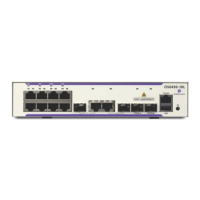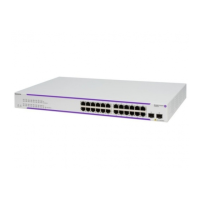OmniSwitch OS6860/OS6900/OS10K Troubleshooting Guide Part No.032996-00 Rev.A
AOS Release 7.X and 8.X January 2015
Alcatel-Lucent Page 53 of 148
9. Troubleshooting BOOTP/DHCP/UDP Relay
Summary of the commands in this chapter is listed here:
____________________________________________________________________
show configuration snapshot ip-helper
show ip helper statistics
show ip udp relay
show ip udp relay statistics
show configuration snapshot system
show log swlog | grep -E "udpRelay|udprelay
debug ip packet protocol udp start timeout 60
cat /proc/pktdrv | grep -E "Classified 24"
____________________________________________________________________
9.1. Troubleshooting DHCP
Minimum working configuration
DHCP Relay Agent Service
-> show configuration snapshot ip-helper
! UDP Relay:
ip helper address 192.168.10.254
Generic UDP Relay Service
-> show configuration snapshot ip-helper
! UDP Relay:
ip helper address 192.168.10.254
ip udp relay port 53
DHCPv6 is a network protocol that is used for configuring IPv6 hosts with IP addresses, IP prefixes and/or other
configuration required to operate on an IPv6 network.
IPv6 hosts can acquire IP addresses using stateless or stateful address autoconfiguration. DHCP tends to be preferred
at sites where central management of hosts is valued; stateless autoconfiguration does not require any sort of central
management, and is therefore preferable in networks where no management is readily available, such as a typical
home network.
Stateless Autoconfiguration
The stateless mechanism allows a host to generate its own addresses using a combination of locally available
information and information advertised by routers. The stateless approach is used when a site is not particularly
concerned with the exact addresses hosts use, so long as they are unique and properly routable.
Stateless Address Autoconfiguration is used to configure both link-local addresses and additional non-link-local
addresses by exchanging Router Solicitation and Router Advertisement messages with neighboring routers.
The following are the two approaches with which an IPv6 node can configure its address in a stateless fashion:
Using automatic address configuration with prefix discovery: This is based on RFC2462. If the
‘autonomous’ flag of a Prefix Information Option contained in a router advertisement is set, the IPv6 host may
automatically generate its global IPv6 address by appending its 64-bit interface identifier to the prefix contained in
the router advertisement.
Stateless DHCPv6: This is not mentioned as an option given in router advertisements [RFC2461].

